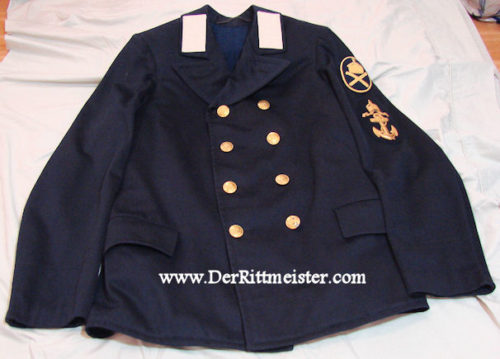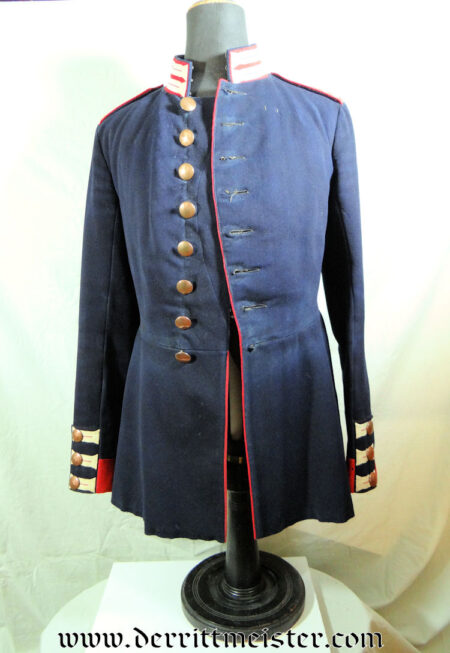Description
This is an enlisted man’s tunic from Magdeburgisches Jäger-Bataillon Nr 4. The unit was raised in1815 and garrisoned at Naumburg a.S. It was attached to the IV. ArmeeKorps. Jäger-Bataillons were assembled to act as the marksmen for the Prussian, Hanoverian, Schaumburg-Lippe, Saxon, Mecklenburg-Schwerin, and Bavarian Armies. These units were formed from the best marksmen during the Napoleonic Wars. They often using better firearms than traditional Infanterie Regiments. During those times, most ground troops marched against each other in neat lines. At VERY close distance, they unleashed massed fire on one another. Often, victory was determined by the army with the fastest firing rate. [The British Army was the technique’s master. It was a key reason that they eventually prevailed with fewer troops than the French. Also, the British were superior to the French in troop deployment. The French advanced in close ranks that extended far back. Many of the rearward ranks were unable to fire. This was not a problem for the British, who extended their lines and got production out of all their men, even the rearward ranks. When the British employed firing-by-ranks, it was devastating. It often shattered the ineffectively deployed advancing French).
Before the main bodies clashed, however, each army sent out skirmishers. These small groups fired on one another, on NCO’s, and on officers in the advancing main body. This was the Jäger-Bataillons’ function. [I must briefly mention the British Rifle Regiments who did the same work. These men were deadly when working in pairs and using the fabled Baker Rifles]. Like the British Rifle Regiments, the Jäger-Bataillons wore green tunics. They helped the men to blend into the scenery a bit better. The tunics distinguished the Jägers from regular infantrymen. Our tunic today dates from about 1900 to 1910. It has a green body with a row of eight gilt-toned buttons down the center. It sports a red collar and red shoulder straps on which the yellow number “4” has been embroidered. Each shoulder strap is stitched into the tunic on one end. It is held in place on the other by a gilt-toned button displaying a “4.” It represents Kompagnie Nr 4. The cuffs are also red, with two gilt-toned buttons. The tunic’s reverse features red trim on the vent, along with six gilt-toned buttons. A scattered moth nip or two shows on the tunic’s exterior, along with a small period repair on the front. Inside, we see it was privately-purchased tunic and not depot-issued. It displays a standard, officer-style, black silk liner. Overall, it is a lovely Jäger-Bataillon tunic from a unit formed during the pivotal year of the war against Napoleon. It is in well-above-average condition. It is value-priced, as well.

















